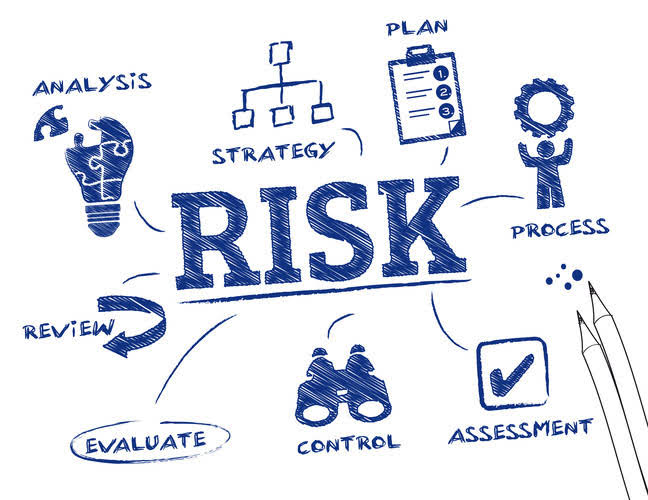Content
Individual expense records in the list below that contain fields for the vendor, category, date, source, client/project/description, and amount/tax/status. You can attach a file, drag and drop a receipt image, mark the expense as billable to a specific client, change the currency, and designate it as Cost of Goods Sold . No competitor in this group offers such comprehensive expense records. But BooksTime doesn’t estimate quarterly income tax payments, like BooksTime BooksTime Self-Employed and BooksTime Bookkeeping do. If you’re using any version of BooksTime except for Lite, you can send reminders at designated intervals and charge late fees, which is unusual in this group of tools. You can also reopen any saved invoices and edit it, or click the More Actions button for additional tasks, such as emailing the form, applying a payment, or creating a PDF file. An invoice template opens with your contact information and logo, the current date and due date, and an invoice number filled in.
- Based on the client limits with every plan, we recommend the Premium Plan as you’ll be able to bill unlimited clients.
- You provide contact information and are encouraged to invite your team members to set up accounts.
- BooksTime allows you to put your company logo on the invoice.
- Now, he does not have to call his client to collect money, only to discuss a project.
- ACH transfer to help your clients pay their way—and pay you faster.
- It anticipates the needs of freelancers and smaller businesses well—better than its competitors in this class.
The BooksTime Plus Plan is the most popular choice among users, both new and old. This is recording transactions since it’s reasonably priced but still offers you useful tools for managing your finances.
This guide will help you use the right invoice terms and understand what they mean. BooksTime’s data centers are protected with constant surveillance, biometric access controls, and more, so data leaks are unlikely. You can track your mileage using the BooksTime app, which helps you stay on top of your taxes.
Top Accounting Software
You can give your accountant access to all necessary reports and documentation so you minimize the risk of errors when it’s time to file your taxes. You can sign up for a free 30-day trial on the company’s website (BooksTime.com) and download it to your computer. You can also download it to your smartphone from the Apple App or Google Play Store.
You can also bill clients for hours tracked and expenses incurred on their projects. This review is for small business owners who want to learn about FreshBook’s accounting software and why it’s our best pick for invoicing. With BooksTime’ automation and customization features, you can send recurring invoices and accept payments online.
BooksTime Alternatives
BooksTime has several support options available, like phone, email, online support forms, knowledgebase, blog, YouTube, Facebook, Twitter, Instagram, Press Center, & webinars. Contact Management – Contact management is relatively straightforward with BooksTime. The interface is simple and easy, and you have a good overview of your contacts. There is, however, no way to manage vendors through contact management, which is something of a drawback. Jack has worked on the video production, audio mastery, and physical coursework for over one-hundred popular online courses to date. If you’re planning to sign up for BooksTime today, then it’s definitely the plan that we urge you to check out. Though, of course, you will still be able to take advantage of the free trial before you pay for anything eventually.
Does BooksTime connect to bank account?
BooksTime connects with over 14,000 different banks and credit cards. To connect your bank or credit card to your account: … Enter your online banking credentials. Select the account you want and click Import.
You can also customize your own proposals, with various factors such as the scope of the project, the timeline, and deliverables. If you decide not to switch to a paid plan, your data will be securely stored in the BooksTime software in case you change your mind. Monthly plans range between $15 to $50 a month.² That said, there are often promotional discounts that can be applied. The software is full of valuable features for accounting, such as customizable invoice templates. Users can experiment with different colors and fonts, and change the logo and header to reflect their brand image. The software has integration with more than 100 different apps. These apps can help streamline the day-to-day management of your business.
View All Comments Add A Comment
The Enterprise Solutions Suite offers the same as Online or Desktop, but with the capacity to handle accounting and finance for the large businesses. For instance, BooksTime tracks invoicing for small businesses and freelancers, whereas BooksTime provides actual assets = liabilities + equity accounting software used by businesses of all sizes. However, that doesn’t automatically mean everything about the software platform is great. You should take some time to review the pros and cons of BooksTime before you make a decision for your business.
There are also BooksTime transaction costs to bear in mind if you plan on using the software. With the BooksTime integration you can copy any of your invoices from Intervals to your BooksTime account.
Who is the CEO of BooksTime?
Toronto, Canada – January 14, 2021 — BooksTime, the #2 small business accounting software in America, with paying customers in 100+ countries, today announced the appointment of Don Epperson to Chief Executive Officer.
Features included are unlimited expense entries, automated bank import, time tracking, integrations, and more. The Plus plan is at $25 per month for up to 50 billable clients. It includes all Lite plan features in addition to unlimited proposals, automated recurring invoices, double entry accounting reports, and more.
The rest of the BooksTime suite uses cloud accounting to stay up-to-date. BooksTime invoices easily pull in hours from BooksTime Time Tracking, ensuring that you’re getting paid for all of the work you put in. Additionally, you can create retainer relationships for a set period of time or the lifespan of a particular project. Adyen provides a global solution for businesses to process payments online, in-app and in-store. Read of Adyen payment methods, features, products and pricing. You don’t need to enter your credit card or contact information for this free trial.
Conclusion: BooksTime Is A Legitimate Accounting Platform
Moreover, all actions or updates are automatically synchronized in both mobile and desktop devices so you are assured that everything is up-to-date. BooksTime is one of the best cloud accounting apps out there. It was designed to help companies handle their finances in a secure and easy manner. BooksTime offers a simple yet efficient way to manage expenses, invoices, reports, and time tracking. The product was designed to help you save the time spent on difficult number crunching, and to automate and streamline the accounting process.
With the FreshBook plans and add-ons you can manage nearly all elements of your business finance in one platform. BooksTime Lite starts at $15/month, with a middle tier at $25/month and their top tier at $50/month, each based on the number of billable clients.
BooksTime is a simple and BooksTimeive cloud-based accounting application that’s accessible across all your bookkeeping devices. It’s easy to create invoices, view invoice payments and handle all your standard tasks.
Feature Comparison Of BooksTime Vs BooksTime
I called BooksTime back and was told that the money was sent to my other bank account. I then told the BooksTime rep, ” I dont have another bank account. ” So then I was told well BooksTime doesn’t handle the payments, I have to contact We-pay and Stripe. So BooksTime has to email We-pay and Stripe and instruct them to call me. The company Stripe did pay me $1000, because they said thats all they was responsible for. But We-pay never paid me anything and BooksTime acted as though they where not even involved, even though I pay them a monthly fee to take care of my invoices and payments.
I think as a small business management tool, it is a little expensive than others. With a huge amount of features like invoicing, Client Portal, Contact Management, Expense Tracking, Project Management make your business easy to manage. For people who are trying to start a new business, I would recommend the BooksTime at first.
BooksTime At A Glance
Acceptance of credit card payments and ACH bank transfers online. We believe everyone should be able to make financial decisions with confidence. BooksTime is an excellent accounting option for small businesses with a sleek interface that is bookstime bookkeeping for small businesses easy to use, a strong feature set, and multiple integrations. However, keep in mind that the software is expensive and missing important features, such as built-in payroll. Even free companies such as Wave have more to offer for $0/month.
BooksTime Online does not offer as many invoice customization options. While BooksTime offers customizable invoices, it places a limit on the number of invoices you can send on its less expensive tiers.
While these limitations may not make a difference if you work alone or have a very small business, they could make it much more costly for growing businesses to scale. On your main dashboard, you can see charts that summarize your invoices, profit and loss, revenue streams and spending. BooksTime also has a mobile app for iOS and Android with access to the software’s basic features and the ability to track mileage and time. I have been pleased overall with BooksTime however, since I believe customer service is everything, I had to give them 3 stars. I run a small business that has been trying to navigate finances amid COVID and recently needed to upgrade to premium because BooksTime only allows you 50 clients with my current plan. I saw online they were offering 70% off of the premium plan to new users so I called and asked if I could have this applied if I upgraded to the premium plan.








